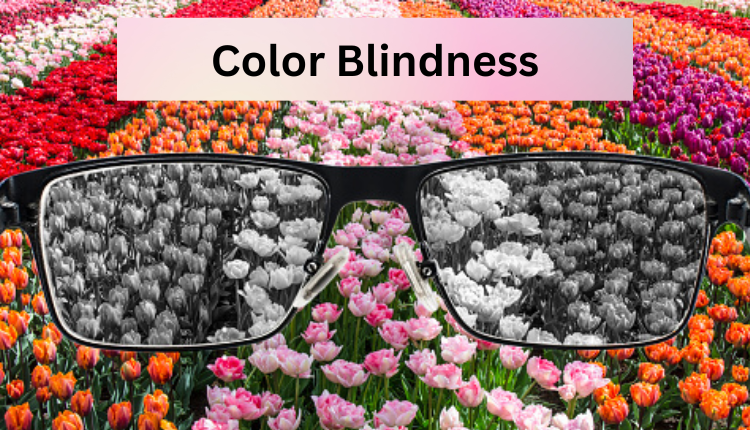October 27, 2022
How Long Will It Take For A Cure For Color Blindness?

For most individuals, losing a sense is a terrifying thought, but for countless others, it is an awful reality. The capacity to see the world around them could change permanently for millions of people in the US.
It's possible that you won't even consider your ability to see and read when you read this sentence. Many folks don't have the same good fortune. There is a website which provides color blind test online. You can easily get tested here.
The World Health Organization (WHO) estimates that there are 285 million visually impaired people in the world. 246 million of them have limited vision, and 39 million are blind.
According to a recent survey by Research! America and the Alliance for Eye and Vision Research (AEVR), Americans believe losing one's vision could have the biggest impact on daily life, ranking it among the top four "worst things that could happen to you" along with cancer, Alzheimer's disease, and HIV.
Unfortunately, losing one's vision is a common issue, whether it is from aging or the emergence of a particular illness. While 80% of vision impairment can be prevented or treated, what about the other 20%?
In this Spotlight post, we take a quick look at retinal degeneration disorders, a collection of connected diseases that exist but have no known treatment.
What medical procedures are being developed right now? Can scientists foresee a time when all sufferers will be able to regain their sight?
Curable And Incurable Disorders

Refractive errors that have not been corrected account for 43% of cases of vision impairment, whereas cataracts account for 33%.
Myopia (short-sightedness), hyperopia (far-sightedness), and astigmatism are examples of refractive defects in which the cornea or lens is not precisely curved.
When these issues lead to visual impairment, medication is frequently simple to obtain. Refractive surgery, contact lenses, or glasses can all be used to treat refractive problems.
The most common surgical operation performed in the US is used to cure cataracts, which is the clouding of the lens.
While 80% of visual impairments are preventable or treatable, there are still 20% of cases that cannot currently be treated.
There are several illnesses where persons who contract them experience a progressive loss of vision until their impairment becomes so severe that they are practically blind.
Disorders causing retinal degeneration are incurable. The retina, a layer of tissue at the rear of the eye that contains cells that sense light entering the organ, is destroyed by these disorders.
These degenerative illnesses include Usher syndrome, macular degeneration, and retinitis pigmentosa. In the industrialized world, age-related macular degeneration is specifically the main factor in blindness.
The Mayo Clinic's Dr. Raymond Iezzi, an ophthalmology consultant, was asked by Medical News Today what the major challenges were in treating retinal degeneration problems.
He explained to us that there are several hundred biochemical anomalies that underlie these ailments, making it difficult for scientists and clinicians to discover effective treatments.
Furthermore, each pattern of retinal degeneration is treated differently depending on the cells damaged as well as the degree and severity of their degeneration, he continued. "There are various patterns of retinal degeneration."
All retinal degeneration disorders were first classified as retinitis pigmentosa upon diagnosis.
Scientists are now more aware than ever that there are some connected disorders, each of which affects the retina in a unique way utilizing a variety of different pathways.
Therapies focused on neuroprotection or gene therapy are options for people whose vision is still strong.
We may be able to preserve sight in sizable patient groups by preventing retinal cells from dying due to the underlying metabolic abnormality, said Dr. Iezzi. Regardless of the underlying metabolic imbalance, a strong neuroprotection strategy would prevent cell death and visual loss.
Instead, gene therapy focuses on treating the metabolic anomalies that cause retinal cell loss. In order to treat the complete spectrum of retinal degenerative illnesses, Dr. Iezzi stated to MNT that several hundred treatments would need to be created.
Restoring And Protecting Vision With Stem Cells

The eye is a good candidate for experimental therapies since it is simple to operate on and frequently immune to inflammatory reactions that would interfere with treatments.
Surgeons can quickly view and monitor the development of innovative treatments as a result of their accessibility.
According to Dr. Iezzi, researchers at Mayo Clinic are presently developing novel techniques for cultivating stem cells from patient tissue samples; this regenerative strategy may one day enable people who have lost their sight to have it restored.
Retinal pigmented epithelium cells, which nourish retinal vision cells and absorb light, can be created from embryonic stem cells and then implanted into patients.
While creating new vision cells from embryonic stem cells would produce even more noticeable outcomes, researchers have found it more challenging to properly create these cells and transplant them into the retina. By doing this, the loss of visual cells could be slowed or prevented.
Studies on mice have already demonstrated that this method is effective and that transplanted cells may fully integrate into the retina, giving the animals their vision back.
The retina contains rod cells and cone cells, two different types of photoreceptive cells. Cone cells are what detect color and fine detail while rod cells are excited by light at a wide range of intensities and perceive shape, size, and brightness.
From embryonic stem cells, scientists were able to create rod cells, and they are currently attempting to create cone cells and transplant them into animals. Human trials may be the next step if these trials are successful.
However, newly transplanted cells could be just as susceptible to problems of retinal degeneration as the cells they replace if there is insufficient neuroprotection.
This issue is what drives the significance of gene therapy research, which aims to treat the metabolic imbalances that cause cell death.
However, there is a kind of treatment that has helped patients with severe cases of retinal degenerative problems regain their eyesight.
The retinal prosthesis can be used by people who have lost their eyesight, just as prosthetic limbs can be used to restore function to people who have lost limbs.
Posted by: Color Blind Test at
07:05 AM
| No Comments
| Add Comment
Post contains 1042 words, total size 11 kb.
30 queries taking 0.015 seconds, 40 records returned.
Powered by Minx 1.1.6c-pink.









